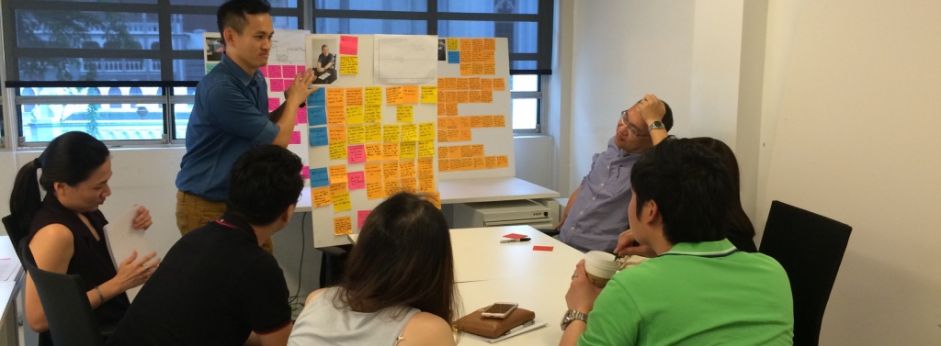Sign up for our monthly newsletter

How clear design can help translate complex policy

Breaking down barriers for every property owner
Residential property tax is payable each year for every property owner, regardless of whether a person owns a three-room HDB, or is an investor with multiple properties in their portfolio. Collectively, despite a high compliance rate, satisfaction is disproportionately low for this particular tax when compared to other types of tax. We were brought in to run an in-depth design project to help uncover the reasons behind this, and develop new and innovative ways of improving satisfaction levels.
Our approach
The first step was to gain a deep understanding of how different taxpayers experience and understand property tax policy. To achieve this, we interviewed 35 property owners, two property agents, and held focus groups with key stakeholders within the organisation. This gave us a view of the end-to-end experience of property tax from all perspectives.
We discovered that people did not understand how the amount of tax they owed was derived, as a result of a complicated policy and unclear explanations. People also had no idea what their property tax money was going towards, which was a key factor in their level of satisfaction. They could not understand the rationale behind it.
We identified seven different taxpayer personas, ranging from savvy users, to frustrated users, to apathetic users who “just pay, lah”. We then developed three key experience journeys the organisation could implement to improve satisfaction across the different types of users.
Together with key stakeholders, we co-created new concepts to address the needs of each of the personas. This resulted in a new potential communication strategy and a prototype of multiple new digital platform features that would allow a degree of ‘self service’. Both were then tested across multiple rounds with taxpayers. We developed a detailed implementation plan for the final concepts to support the team in bringing these ideas to life in the real world.
Key insights:
At its highest level, this project became an exercise in how to communicate a policy that was hard to understand to everyday citizens, and making compliance simple and intuitive through smart service design.
Our two key takeaways:
- The complex explanations of property tax calculations had to be simplified for all users, and
- It was essential to move from a ‘one-size-fits-all’ service to customised engagement opportunities that are ‘digital by default’.
Good service design helps to translate complex messages (or a hard to explain policy in this case) in a way that will encourage greater understanding.







